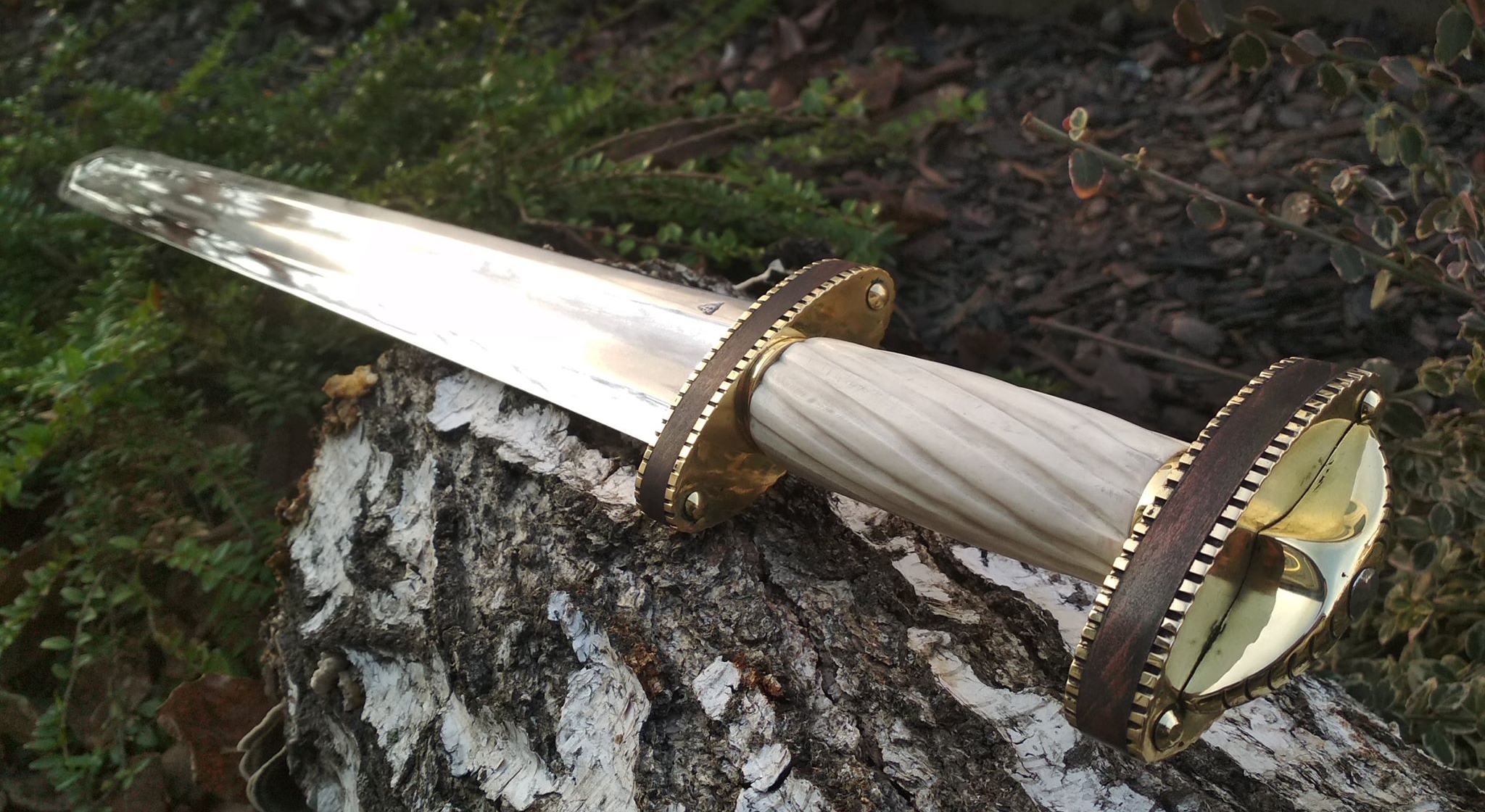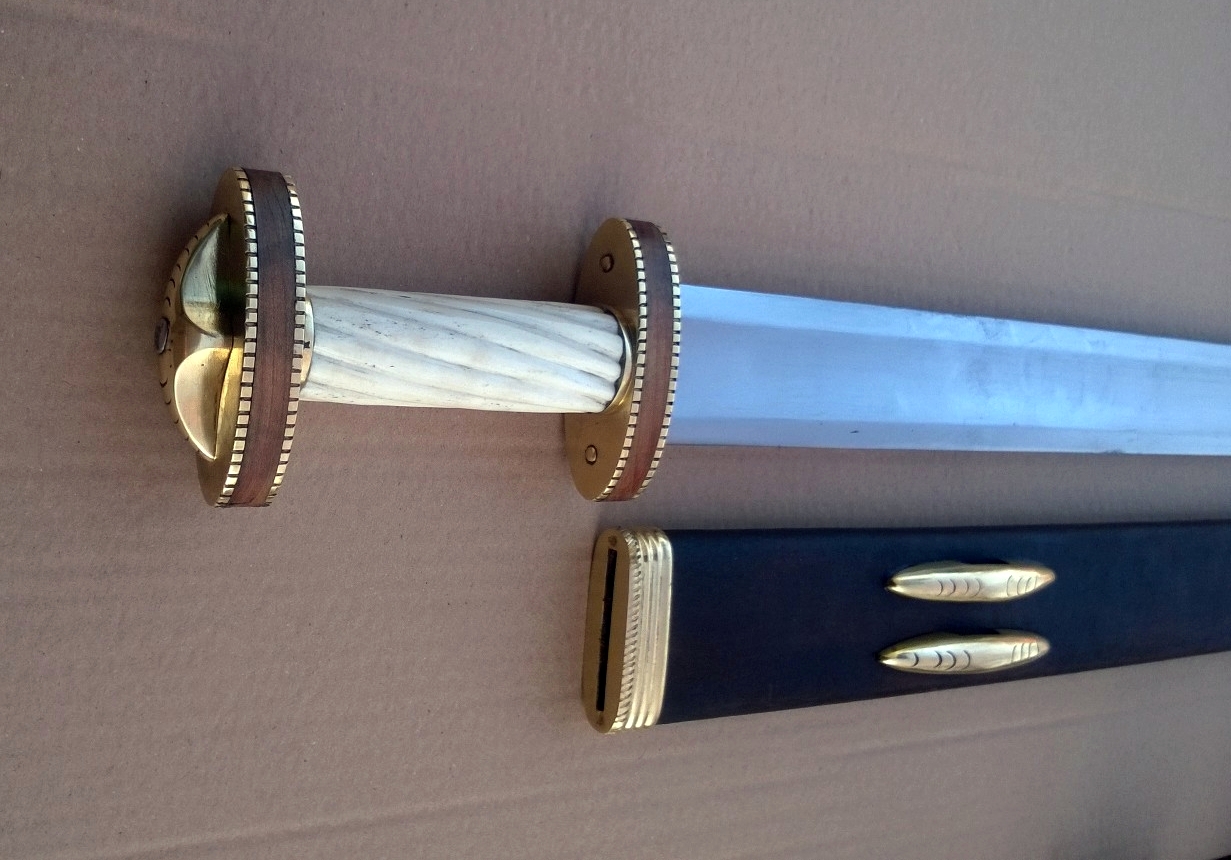We can find many nice, and interesting swords in our history.
Let's see now the spatha!
There are two main groups of spathas:
I. Roman spatha
It developed from the Roman gladius, the grip is very similiar with horn and wood plates. (Gladius: the short sword of infantry, which was used in Phalanx)
The spatha had wide, double-edged, longer blade than gladius, often with more fullers.
The best sword blades in this period were made by pattern-welding system.
Cavalry used this long weapon. They could reached the infantry easily with them.
Possession of spatha indicated high social class, and status.
II. Germanic spatha 5th-7th Century
The grip consruction is different from the Roman gladius, but later it was used by Roman as well.
Sandwich pommels were very typical: layers of horn, wood, or bone, iron or brass plates.
The viking swords ancestor was the germanic spatha.
The warriors could deliver very powerful blows from above the shoulder with the single-handed, parallel-sided, double-edged spathas.
Probably they didn’t use these weapons with sophisticated technique, but they tried to achieve the maximum force.
The guard was very small, it couldn’t protect the hand. This function was developed later.
I would like to show you one spatha which was made in our workshop as a reconstruction:
Characteristics:
- wide, double-edged blade
- Grip: Bone, beech within the brass plates
- Woodenscabbard with leather covered, with brass fittings

